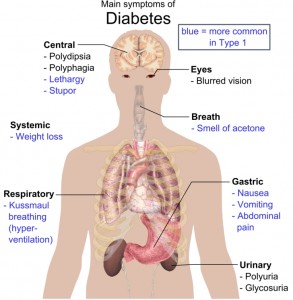
PHILADELPHIA – More than 29 million Americans are currently living with diabetes. The majority have type 2 diabetes, and for them insulin resistance – their body’s inability to effectively process sugar – is a part of daily life. Therefore, understanding the cause of insulin resistance is critical to tackling this chronic disease. A new link between high levels of certain amino acids and type 2 diabetes was found by a team led by researchers from the Perelman School of Medicine at the University of Pennsylvania, using mouse and human muscle and blood samples to evaluate the mechanisms that lead to insulin resistance. The findings of this study appear online in Nature Medicine ahead of the print issue.
“This research sought to answer a few large questions,” said senior author Zoltan Arany, MD, PhD, an associate professor of Cardiovascular Medicine. “How does fat get into skeletal muscle? And how is the elevation of certain amino acids in people with diabetes related to insulin resistance? We have appreciated for over ten years that diabetes is accompanied by elevations in the blood of branched-chain amino acids, which humans can only obtain in their diet. However, we didn’t understand how this could cause insulin resistance and diabetes. How is elevated blood sugar related to these amino acids?”
The team found that a byproduct compound of breakdown of these amino acids, called 3-HIB, is secreted from muscle cells and activates cells in the vascular wall to transport more fat into skeletal muscle tissue. This leads to fat accumulation in the muscle, in turn leading to insulin resistance in mice. Conversely, inhibiting the synthesis of 3-HIB in muscle cells blocked the uptake of fat in muscle.
“In this study we showed a new mechanism to explain how 3-HIB, by regulating the transport of fatty acids in and out of muscle, links the breakdown of branched-chain amino acids with fatty acid accumulation, showing how increased amino acid flux can cause diabetes,” Arany said.
While most of this research was conducted using mouse cells, the team also found that 3-HIB, the byproduct molecule, was elevated in people with type 2 diabetes. Because of this, Arany and colleagues say that more studies are needed to fully examine the nature of this mechanism among people with type 2 diabetes.
“The discovery of this novel pathway – the way the body breaks down these amino acids that drives more fat into the muscles – opens new avenues for future research on insulin resistance, and introduces a conceptually entirely new way to target treatment for diabetes” Arany said.
Additional Penn authors on the study include Cholsoon Jang, Shogo Wada, Atsushi Hoshino, Boa Kim, Ayon Ibrahi, Qingwei Chu, Saikumari Krishnaiah, Aalim M Weljie, and Joseph A Baur.
This work was supported by the American Heart Association (AHA), the US National Institutes of Health, and the Geis Realty Group Emerging Initiatives Fund and Dean and Ann Geis.
Source: Penn Medicine [xyz-ihs snippet=”Adsense-responsive”]




